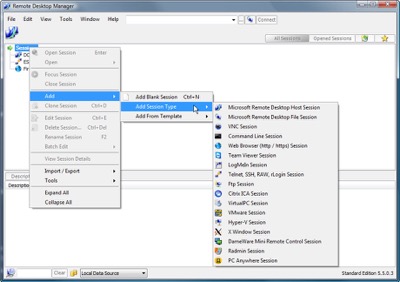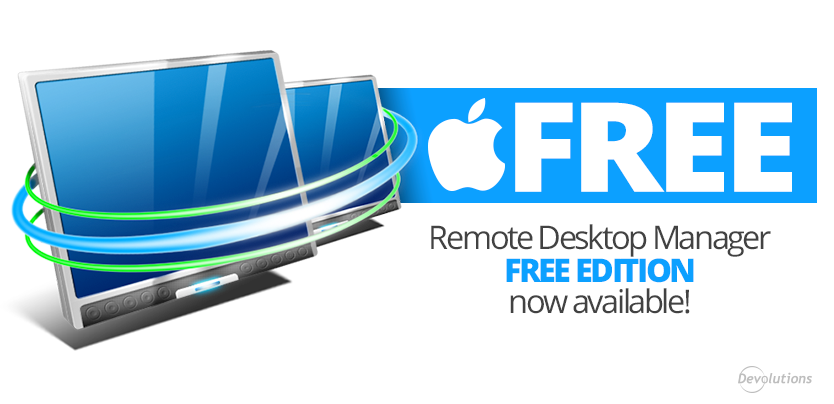Prepare devices for working from home or remotely
Remote Desktop Manager is compatible with all 64-bit versions of Windows, starting with Windows Vista SP1. Terminal Services and Thin Client Support. Remote Desktop Manager can be installed on a Terminal Server machine and thin client. Remote Connections Manager for Mac Free to try Jan Cinert - LightNETcom Mac OS X 10.4 Intel/PPC/Server, Mac OS X 10.5 Intel/PPC/Server Version 1.0.0.
Your first step is to determine which devices employees can take home. Then, you can use your mobile device management system (MDM) to quickly set up iPad, iPhone, and Mac computers with content, settings, and restrictions to support remote work for your employees. Learn more with the deployment overview for iOS and iPadOS and the deployment overview for Mac.

Below are suggestions to help you prepare devices for remote work.

For corporate-owned devices
Adjust settings to make sure that employees can work remotely when they take devices home.
For personal devices

Provide instructions for User Enrollment—a new enrollment method designed for bring your own device (BYOD) deployments. This lets employees enroll their devices into MDM so they can access additional apps and resources for home use. Learn more about User Enrollment.
Get started with MDM
- Update all Mac computers and iPad devices to the latest available version of macOS and iPadOS. This ensures compatibility with apps and MDM settings.
- Use Apple Business Manager with your MDM solution to configure device settings and buy and distribute content. Apple Business Manager is a web-based portal through which IT administrators can deploy iPhone, iPad, iPod touch, Apple TV, and Mac computers all from one place. Get started with Apple Business Manager.
- If you don't have an MDM solution, providers such as Jamf, VMware, and MobileIron offer extended trial periods to help with rapid deployment for remote workforces.
Deploy devices
- Use Automated Device Enrollment for all corporate-owned devices so that IT can enroll devices in MDM remotely.
- Use User Enrollment for personal devices to protect company information while maintaining privacy for employees.
- Create Managed Apple IDs in Apple Business Manager to use User Enrollment for personal devices and provide access to key Apple services. Learn more in the Managed Apple IDs overview.
- Connect Apple Business Manager with Microsoft Azure Active Directory to turn on federated authentication so that employees are automatically set up with their Managed Apple ID using their existing corporate credentials.
Distribute content
- Deploy the core apps that your employees need to work from home. Apps can be distributed remotely, using Apple Business Manager and your MDM. Learn how to select and buy content in Apple Business Manager.
- Use your MDM system’s self-service feature (if available) to provide employees with a catalog of supplemental apps. Refer to your MDM documentation to find out if this feature is supported and how to implement it.
Configure settings specific to your organization
Use MDM to make sure that employee devices are configured, have access to resources, and follow acceptable use policies when working at home.
Configure settings
- Make sure network restrictions allow connections from home or public Wi-Fi networks. Learn how to set network restrictions with MDM.
- Configure VPN to connect to key corporate services. Learn more about VPN payload settings.
- Configure Mail, Calendar, and Contacts services for your organization. Apple devices work with mail services like Microsoft Exchange and G Suite. Learn more about configuring Exchange ActiveSync and Google Accounts.
Adjust security policies
- Secure your devices with built-in security tools and MDM. Use FileVault encryption on Mac computers and enforce a passcode policy to use Data Protection on iPhone and iPad devices. Learn more about Passcode payload settings.
- Use an end point security solution, such as Cisco Security Connector, which offers protection and network telemetry with cloud-hosted extended-trial periods.
- Use MDM to configure any necessary restrictions, such as use of cameras, iCloud services, and usage of apps. Learn more about iOS and iPadOS restrictions.
Stay connected, collaborative, and productive
Discover apps from Apple and third parties that work well in remote environments.
Video and messaging apps
- Conference tools like Cisco Webex and Zoom Cloud Meetings allow employees to hold virtual meetings and share their screen with coworkers, customers, and partners.
- Group FaceTime lets employees make audio and video calls with up to 32 other people.
- Employees can set up groups and send real-time updates with Messages on iPhone, iPad, and Mac and use tools like Slack and Microsoft Teams to stay connected and share information.
Productivity apps
- Pages, Numbers, and Keynote come with Apple devices and allow employees to collaborate in real time on iCloud or with Box. You can restrict collaboration to only members of your organization. Learn how to collaborate in Pages, Numbers, and Keynote.
- Microsoft Office 365 apps are available from the App Store and integrate with iOS, iPadOS, and macOS.
- Google G Suite works in Safari on macOS and iPadOS and also offers native iPadOS apps such as Google Drive and Google Docs.
- Electronic form and document apps like DocuSign, ProntoForms - Mobile Forms, and iAuditor can help capture, combine, and share signatures and data.
- Cloud storage providers like Box, Dropbox, and Microsoft OneDrive help employees share and collaborate on documents. These services can integrate with the Finder on Mac and the Files app on iPhone and iPad.

Project and task management apps
- Project management tools like Teamwork Projects, Basecamp, Trello, and OmniPlan can help plan, visualize, monitor, and share project activities and actions.
- Apps like Reminders, Things, and Todoist can help employees stay focused on the task at hand.
Find more business apps on the App Store
The App Store has thousands of apps designed for business. We have curated a collection with apps to help connect with your coworkers. Distribute them with Apple Business Manager to give your employees more ways to work from home.
Contact Apple for support
While employees are working from home, they can contact AppleCare if they need technical support. Troubleshooting help is available for Apple hardware and software including iOS and macOS, and Apple apps such as Pages, Numbers, and Keynote. To get started, employees can visit the Apple Support page and select a product to view available support options.
Remote Desktop Manager For Mac Download
Get more help
Mac Os Remote Management
Resources for IT
- Visit the Apple at Work IT page for more resources and information about managing, deploying, and securing Apple Devices.
- View additional resources and setup guides on the Apple Business Support page.
Documentation for IT
Remote Desktop Connection Manager For Mac
Other resources
- Privacy and security are built-in to Apple devices, software, and services. We design our products to limit the collection and use of data, use on-device processing whenever possible, and provide transparency and control over how information is shared. Learn more about how security technology and features are implemented within Apple platforms.
- Apple devices come with built-in accessibility features such as VoiceOver for employees who are blind or have low-vision, Voice Control for employees with motor disabilities, or closed captions for employees who are deaf or hard of hearing. Learn more about accessibility in Apple devices.
- To discover more ways to be more productive, collaborative, and creative on your own and with your team, check out the Tips for working with Apple devices guide.
- Learn how to clean your Apple devices.
Remote For Mac App
Some resources mentioned in this document might not be available outside of the United States.
